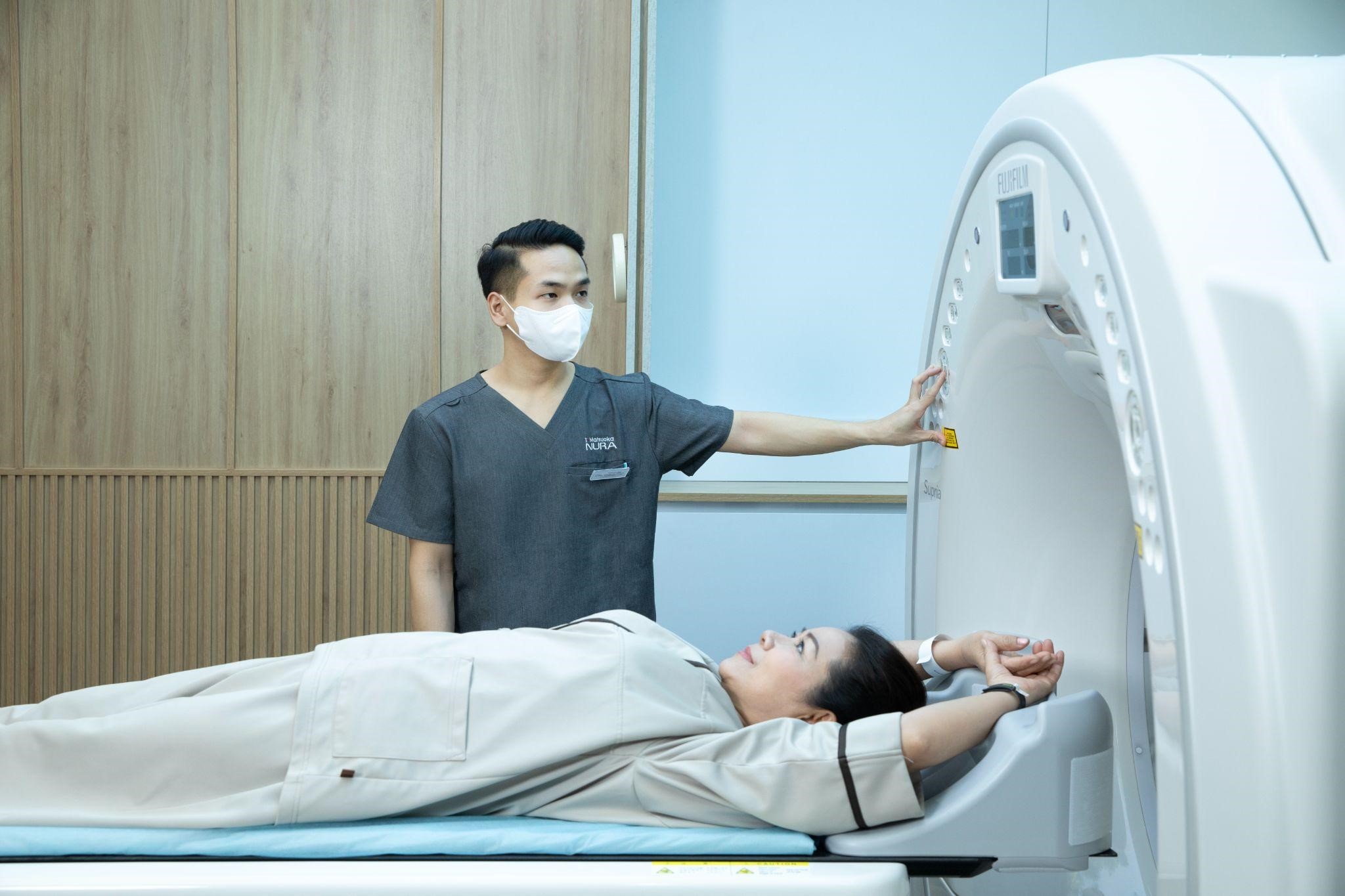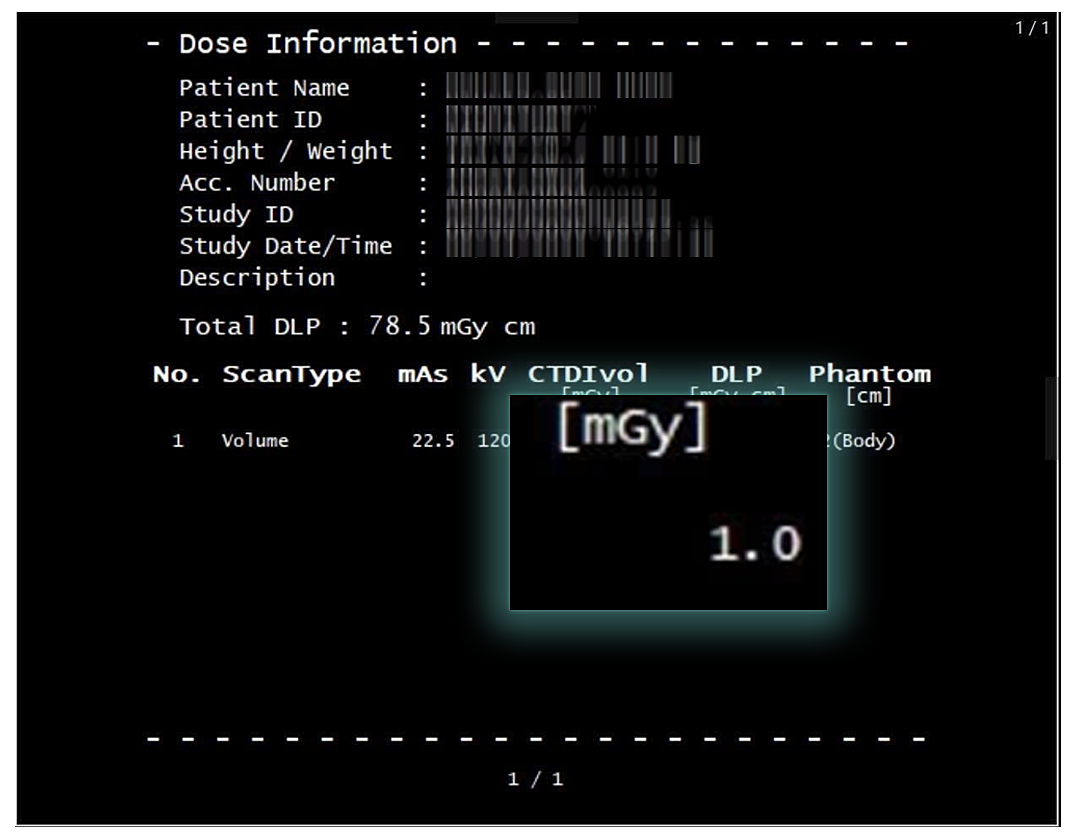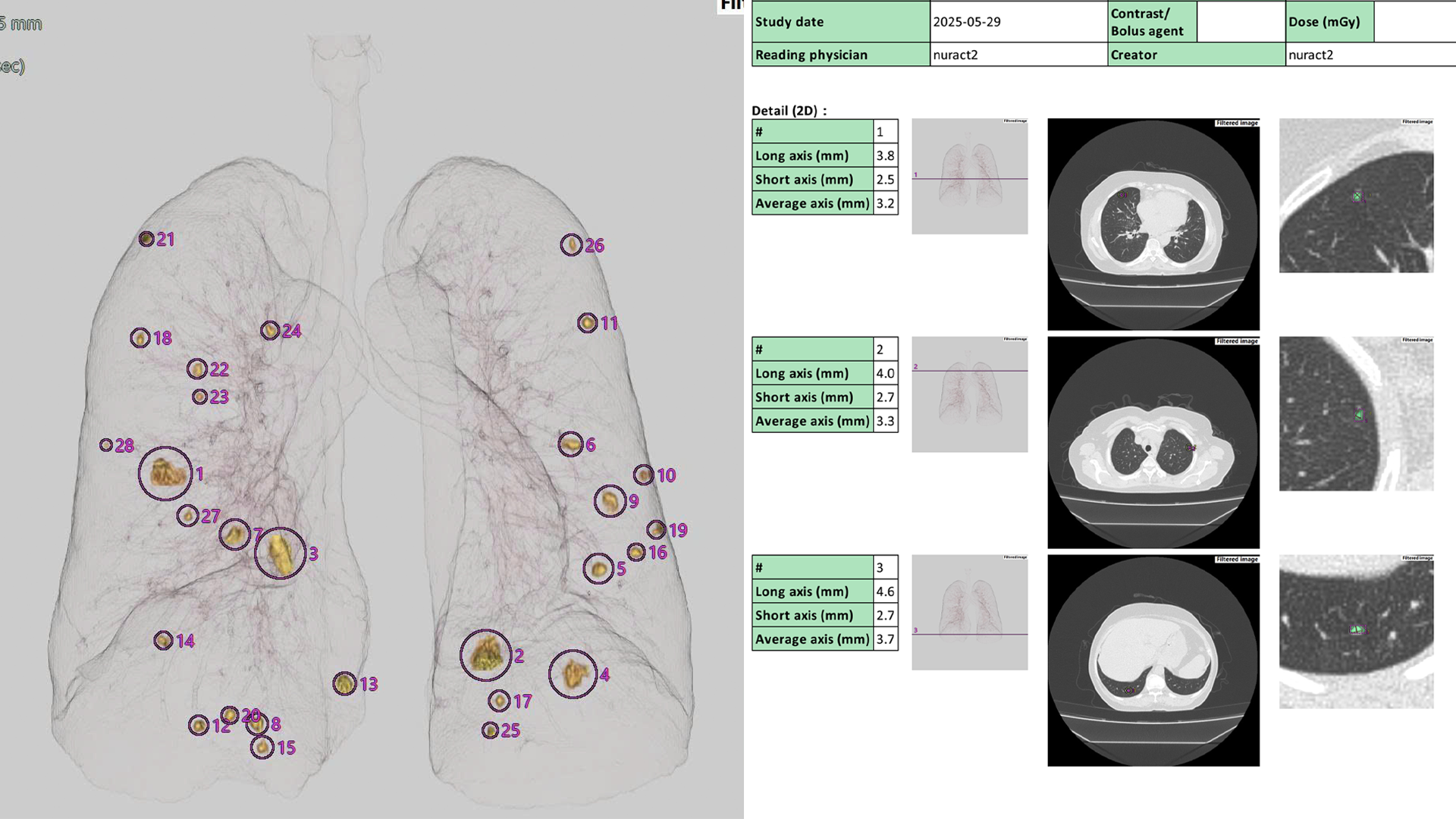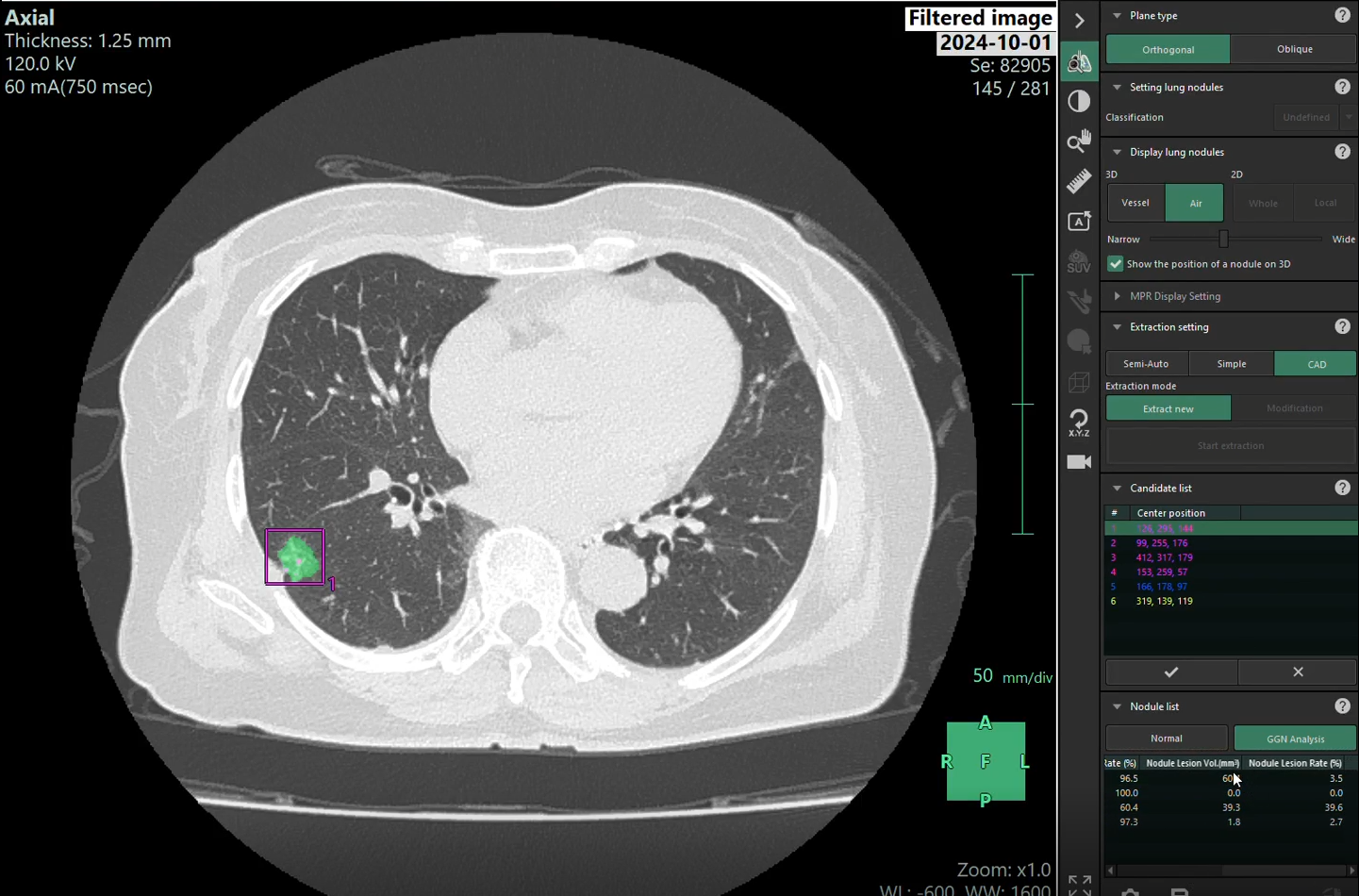Early cancer screening is crucial. Traditionally, methods like blood tests, X-rays, and ultrasounds have been used, but these have limitations in detecting early-stage or precancerous conditions. The growing demand for more accurate and timely results has led many to seek advanced methods like CT and MRI scans.
"In my over 40 years working in respiratory care, I've always been cautious about ordering CT scans. Previously, they were reserved for high-risk patients or those with noticeable symptoms, not healthy individuals, due to the risks associated with X-ray exposure," said Associate Professor, Doctor Nguyen Hai Anh, former Deputy Director of the Respiratory Center at Bach Mai Hospital.
According to Doctor Hai Anh, thanks to technological advancements and AI support, CT scans now offer superior diagnostic benefits with enhanced safety and accuracy, minimizing the risks. "New technology reduces X-ray exposure by up to 97% compared to conventional levels while still detecting precancerous lesions just a few millimeters in size," he explained.
 |
AI-powered CT scans ensure both safety and more accurate results. Photo: Nura |
AI-powered CT scans ensure both safety and more accurate results. Photo: Nura
At Nura, for example, their AI technology, developed by Fujifilm in collaboration with Stanford Medicine and using a database of 400 million cases collected over 10 years globally, can automatically pinpoint lesions as small as 1 mm. This AI application has been certified as safe and effective by the US Food and Drug Administration (FDA) and is currently used in many countries.
 |
In a real-world case, a CT scan for a client 1.63 m tall and weighing 61 kg used only 1 mGy, a 92% reduction in X-ray dose compared to the usual 10-15 mGy. Photo: Nura |
In a real-world case, a CT scan for a client 1.63 m tall and weighing 61 kg used only 1 mGy, a 92% reduction in X-ray dose compared to the usual 10-15 mGy. Photo: Nura
When analyzing lung lesions, doctors at Nura use AI results to determine whether a patient has pneumonia requiring standard treatment, or a potentially malignant lesion requiring monitoring or further investigation. "This 'two-tiered' diagnosis, combining AI and experienced doctors, ensures better outcomes," said Doctor Nguyen Tat Dat, Deputy Director of the Imaging Center at Nura.
 |
A chest CT scan using AI technology for a 62-year-old female patient on 29/5 revealed 24 small lesions ranging from 2 mm to 9 mm, diagnosing ovarian cancer metastasized to both lungs. Photo: Nura |
A chest CT scan using AI technology for a 62-year-old female patient on 29/5 revealed 24 small lesions ranging from 2 mm to 9 mm, diagnosing ovarian cancer metastasized to both lungs. Photo: Nura
A representative from Nura High-Tech Screening Center shared two cases. A 45-year-old man came to Nura anxious after another facility had detected a lung lesion. A biopsy was recommended due to suspected cancer, but the patient delayed the procedure and sought a second opinion at Nura. Based on the AI data and the doctor's expertise, the lesions were deemed benign. The patient received treatment for pneumonia and recovered.
 |
A lung cancer case detected and alerted early by AI. Photo: Nura |
A lung cancer case detected and alerted early by AI. Photo: Nura
In another case, a woman in her 40s diagnosed with pneumonia at another facility and undergoing treatment for a month came to Nura for screening. A 10 mm lung lesion was discovered. The AI assessed the lesion as having irregular borders, unclear blood vessels, but a high cell density, with a solid nodule ratio of nearly 70%. Based on these suggestions and the doctor's clinical experience, Nura advised a biopsy, which confirmed stage one lung adenocarcinoma.
"Both patients had common symptoms easily mistaken for the flu or pneumonia," the representative said.
According to statistics from Nura High-Tech Screening Center, out of over 16,000 cases examined at their facility (229 Tay Son, Hanoi), nearly 100 cases of early-stage cancer were detected. These were primarily cancers with high incidence rates in Vietnam, such as lung, breast, liver, kidney, and cervical cancers. CT scans can also detect other serious conditions like cardiovascular disease and stroke, which are difficult to identify early with routine checkups using X-rays, ultrasounds, or blood tests.
In Japan, a new cancer case is diagnosed every 30 seconds. However, cancer is not as feared in Japan, with an average cancer survival rate of around 75%, compared to only about 25% in Vietnam, according to Globocan 2022.
The key lies in the Japanese people's awareness of regular checkups and early cancer screening. Early detection and treatment not only lessen the emotional and physical burden but also increase the cure rate to over 90% while reducing costs compared to late-stage detection.
The Dan












